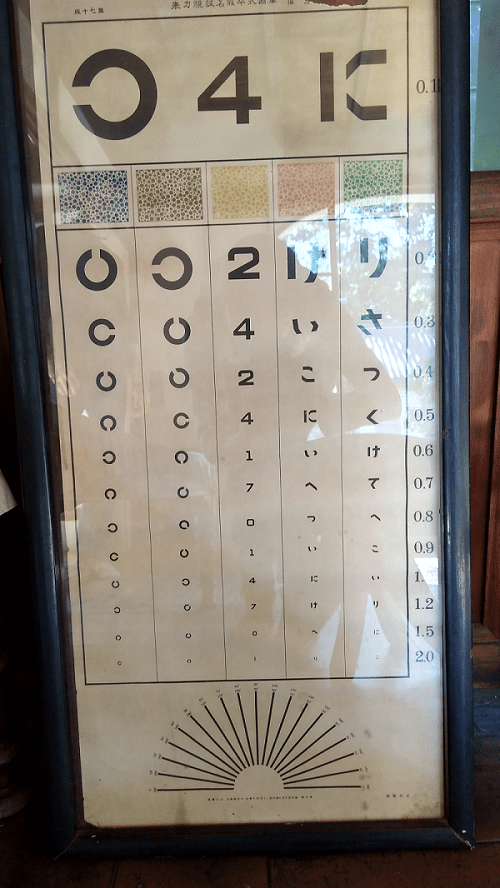A BRIEF HISTORY OF EYE EXAMS
Recently, a patient asked me, “How did they do eye exams in the past without all of this fancy equipment?” What a fantastic question! As well as an interesting topic for conversation.
Over the centuries, scientists have striven to understand how human sight works, and how the eye and brain function as a unit. Looking back into Roman times, there’s mention of the Roman tutor Seneca using a globe of water to help him see smaller print with more ease. He also may have used polished emeralds to filter sunlight at the Roman games, like an early version of a sunglass lens.
While Seneca understood how to fix his own eye problems, if you go back even further in history, the ancient Egyptians mentioned cataracts in their scrolls, demonstrating a basic understanding of how the eye itself works. However, cataract surgical procedures didn’t show up until the Middle Ages – and were quite invasive, to say the least. We should all be thankful that the modern version of cataract surgery no longer blinds people on a regular basis.
Coming back to the topic of eye exams: during the first century AD, visual testing was not really a facet of everyday culture. Rather than trying to solve visual problems, society worked like this: “Are you having issues seeing far away? Can you read and write? Congratulations! You will now spend your days as a scribe, or in a forge.” Or alternatively: “Having near vision issues? Rather than have you work on the king’s jewelry, let’s station you on a rampart so you can keep watch for the enemy.” Nearsightedness could be a gift in some trades, where detail work was still done painstakingly by hand.
Keep in mind, the global population in the Middle Ages did not tend to live long enough to become presbyopic – meaning, they didn’t live long enough to lose their ability to focus on near objects! If someone with spare change was struggling with near work during this era, polished stones set in horn or iron were fashioned for them. The individual could then hold the translucent stones up to their eyes to help alleviate some eye strain at a near distance. For those who could afford it in the 1300’s-1400’s, this was a workable option, but still relatively rare in the population at large.
By the 1700’s, we began to understand how the human eye perceived light and images thanks to scientists such as Roger Bacon, Johann Kepler, and Rene Descartes. This was the era in which scientists first discovered how refractive error occurs in the eye. Having that baseline allowed for an understanding of how to bend light to fix common refractive issues – from presbyopia and farsightedness to nearsightedness and astigmatism.
As scientists studied the eye and began to collect data on different eye afflictions, one of the first pieces of testing equipment developed was visual testing charts. The first attempts at standardized charts used shapes that common illiterate people would recognize – everything from pictures or flowers, to the Big Dipper Constellation. When Herman Snellen created his famous E chart in 1862, it took the lead in visual acuity testing. Some folks still remember doing eye exams where they would point or indicate which way the E was facing on the chart!
Since the E chart appeared, we have seen the gradual invention of phoropters (the clicky thing that flips lens options in front of your face); slit lamps (bright lights that can be adjusted to hit various depths in your eye); and retinal testing equipment. Today’s optometrists and ophthalmologists can now check your glasses prescription and overall eye health with ease. In the years to come, AI will probably produce the next big revolution in eye testing. Whatever advancements that will bring, I’m sure we are all thankful for today’s understanding of human anatomy – and grateful to leave the brutal exams and treatments of the Middle Ages in the past.

